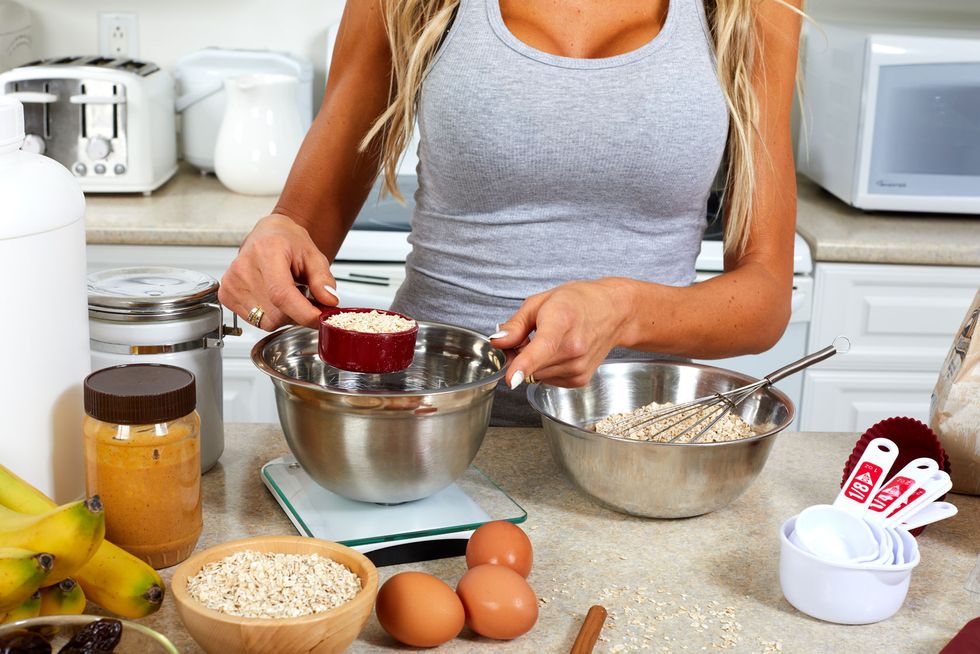
The renunciation of gluten is very widespread today, and those who must or want to make this choice find themselves facing important changes in their diet and lifestyle, in social relationships, work and leisure. Getting organized at home requires some precautions. Here are some common mistakes
From real intolerant to those who, without being celiac, however, have a marked sensitivity to gluten , up to those who simply choose to eliminate it from the diet: lately gluten is in the spotlight of the food world. This food complex consisting mainly of proteins , is present in some cereals (wheat, rye, barley, oats, spelled, spelled, kamut, triticale) and in mother yeast or natural yeast.
You can prepare tasty dishes by avoiding processed cereals, without sacrificing taste, texture and pleasure. But what are the most common mistakes in organizing a gluten-free life and cooking?
1_Think that it is enough to change the type of flour
If you are giving up gluten for health reasons, keep in mind that the solution goes beyond using chickpea flour instead of wheat. Living gluten-free is not about a mere substitution of ingredients, it is a real process. Cross-contamination is a serious problem, so if you also cook with flours rich in gluten (in the case of a family whose members have different needs, for example), additional precautions must be taken to avoid dangerous overlaps for those who are intolerant to gluten. .
You can certainly use the same pots and pans for both types of cooking, but make sure you clean them thoroughly every time. As for dishes, trays or kitchen tools, remember not to use them at the same time for celiac and non-celiac foods, therefore it is forbidden to turn gluten free pancakes with the same spatula used just before to turn the classic pancakes. Or put the two types of cookies on the same tray.
2_Decide that all carbohydrates are "bad"
Gluten-free never means more carbohydrates or wheat. It means eliminating flours that contain gluten, ie those of some cereals (wheat, rye, barley, oats, spelled, spelled, kamut, triticale); which does not mean forbidding starchy delights such as rice, corn, potatoes, amaranth, buckwheat, quinoa and others, naturally checking that they have been treated with gluten free equipment. The ideal is to consume foods that are gluten-free per se , avoiding where possible the “noglu" versions of traditionally gluten-rich foods such as pasta, crackers and wheat bread.
3_Estimate that all flours are the same
Baking and making gluten-free desserts is more complicated than simply replacing a traditional flour with a gluten-free one: the latter are dozens, from those based on almonds to that of chickpeas, and not all react in the same way with the other ingredients . Often then, desserts made with gluten free flours need an extra binding element compared to regular "glutinous" recipes.
If it is a question of cooking a flour-based recipe, follow only proven recipes that have been "built" around the noglu flour in question, do not limit yourself to making a substitution in the recipe for Aunt Luisa's plum cake: otherwise, we guarantee you a result… surprising.
4_Believing that a gluten-free diet makes you leaner or stronger
Gluten free is not synonymous with healthy . A gluten-free biscuit or pastry is always a biscuit or pastry. Don't be fooled, thinking that enjoying gluten-free delicacies saves you a few extra pounds: if you are craving greedy appetizers, instead turn to healthier (and naturally gluten-free) choices, such as vegetables and fruit, perhaps fresh fruit with Greek yogurt and honey, for example.
5_ Establishing that living without gluten is too difficult, and give up
Living gluten free is difficult. Eating out means doing research, and while restaurants offering truly gluten-free dishes are on the rise, there is always the risk of accidental contamination. Lean on the communities that share your problem, try the premises accredited by Aic, the Italian Celiac Association (www.celiachia.it ) , check that your purchases carry the crossed ear logo, which distinguishes products for which the suitability for consumption by celiacs. Continue to try gluten-free recipes and experiment in the kitchen: taste is definitely a personal thing, and the satisfaction you feel when your version "without" of a classic loved by you and your family is perfected and appreciated, it is without borders.
If well organized, a gluten-free lifestyle doesn't have to be austere, overly restrictive, or isolating, and it can certainly be delicious. Don't give up , and remember to look for and use foods that are naturally gluten-free, and keep testing recipes until you find those in your strings and make them successful.







